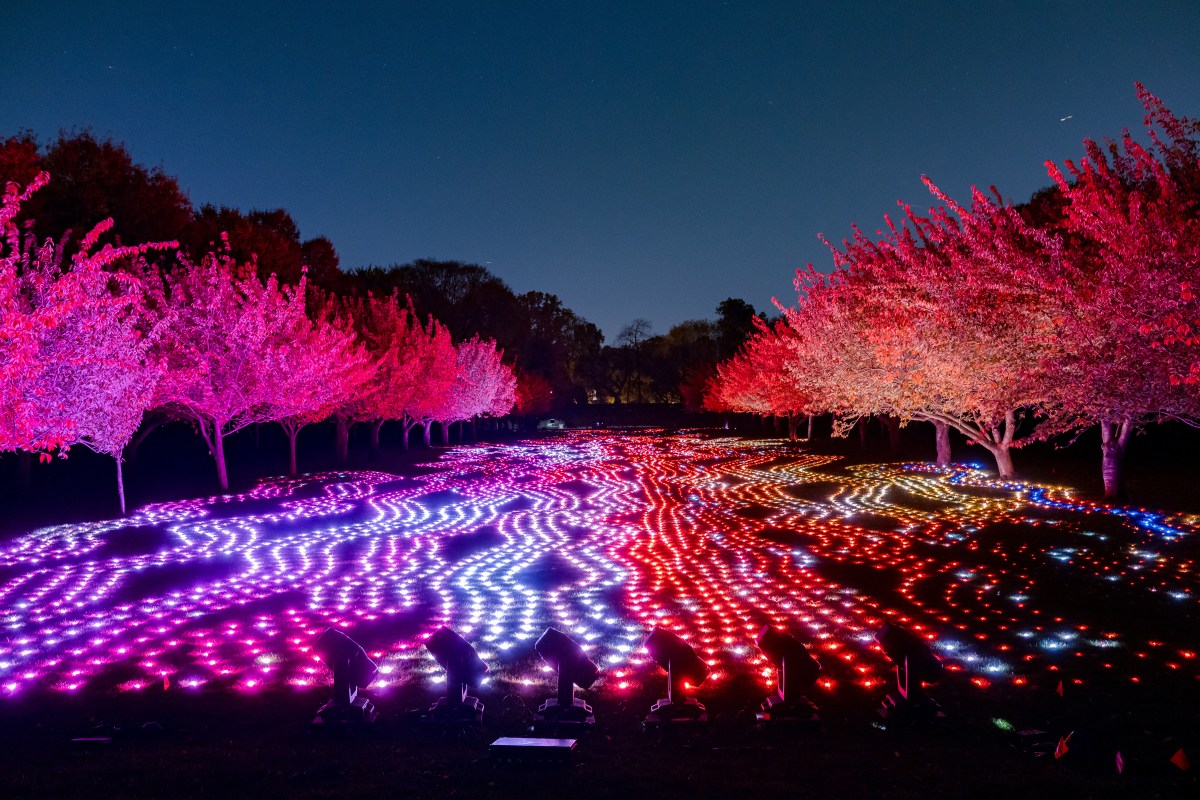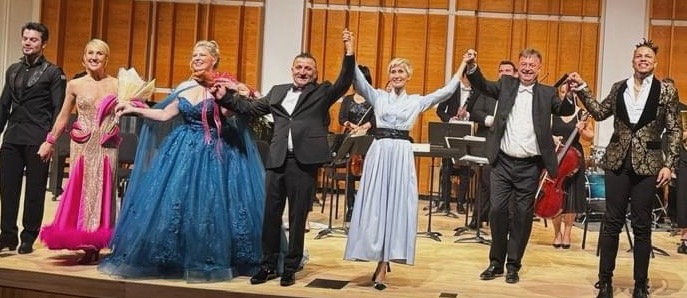
After five long years of planning, the American Museum of Natural History broke ground on its brand-new, $383 million Richard Gilder Center for Science, Education and Innovation on Wednesday.
The ceremony brought together stakeholders, from the museum’s president Ellen Futter to Mayor Bill de Blasio, members of the design firms, and all the financial backers, including Richard Gilder himself.
And although it is three years away from completion, there is a lot of excitement from museum staff, board members and city agencies around what it will bring to the city and the world of science.
Already, the museum welcomes more than 5 million visitors a year, including 82,500 students and 4,500 teachers.

"We made it," Futter proclaimed at the ceremony. "It is an especially important civic moment in the life of our great city. I hope you have an enormous sense of pride and purpose as we initially begin construction for what quite simply will be a spectacular and vitally important resource for science and education, infused with technology, oozing with innovation and reaching people everywhere throughout the five boroughs of Gotham and the furthest corners of the world in unique ways that only the AMNH can."
As we look forward to the opening of the five-story center, there are some key components to the new space that will mean more fun and learning for the public.
The Central Exhibition Hall

This is where visitors to the museum will enter, able to see through to new galleries and access a grand, central staircase with wide steps designed for sitting on. Inspired by Earth processes, the center will connect seamlessly to the rest of the museum and contain bridges and sculpted walls that peek into the museum’s ongoing programs and exhibits.
One of those is the Allison and Roberto Mignone Halls of Gems and Minerals, which will open in the fall of 2020.
The Collections Core
This section will house about 4 million specimens, with observation points for guests to view other sections of the center.
The Susan and Peter J. Solomon Family Insectarium
Visitors can learn about all sorts of insects, which are the most diverse group of organisms on the planet. The gallery will be the first of its kind in 50 years solely dedicated to the creatures.
The Butterfly Vivarium
This gallery will be open year-round for guests to get up close and personal with butterflies in their own habitat.
The Invisible Worlds Theater
Visitors can learn about new scientific findings through visualizations screened here.
A Research Library and Learning Center
For those who don’t know, the museum has its own scientific research and educational programs, including Urban Advantage, the Master of Arts in Teaching Program, and the Science Research Mentoring Program for teachers and students. This new space will offer a scholars’ reading room, an exhibition alcove, a group study room, an adult learning zone and four other learning zones for middle and high school students, families and teachers.

New changes to Theodore Roosevelt Park
Landscape designer Reed Hilderbrand will offer upgrades including a wider entrance from Columbus Avenue, new hardscape gathering area with seating, new plantings, drainage and irrigation improvements, and more trees and benches.
The disturbance of the beloved park has been a sticking point for many Upper West Side residents. Community United to Protect Theodore Roosevelt Park unsuccessfully sued the museum to halt development of the Gilder Center, but the museum was able to get approval from the necessary city agencies and Community Board 7 after conducting an environmental review.
Part of the approval from the city’s Parks Department requires the museum to restore parkland that is inaccessible during construction, allocate money for maintenance, and open up temporary access and a path from Columbus Avenue.
As construction gets underway, three existing museum buildings are being taken down to make room for the center. However, the temporary loss of space and new construction is seen as a commitment to furthering science education, according to officials.
"Science is under attack. I’ll say it a little more bluntly: Science is under attack and that is a danger to our nation and our world," de Blasio said at the ceremony. "The fact is we need to double down on science, we need to focus evermore crucially on science. So I hope that this will be where a whole new generation learns a devotion to science. Because we’re all responsible for saving this Earth right now, and the generation coming up will have even greater responsibility. So, here at the Gilder Center, I think those connections will be made and those sparks will fly where young people will become devoted to the work of preserving our planet, protecting all of us."
































